Let’s take a look at the chords that appear in the keys of C Major Scale. We’ll start by revising the tonic chord, or home chord. Remember, the tonic chord of any key is the chord built on the first note of the scale. For more clarity on chords, read our article on Piano Chords Overview.
We start with the C Major scale. And give each note a scale degree number:
| C | D | E | F | G | A | B | C |
| 1 | 2 | 3 | 4 | 5 | 6 | 7 | 1 |
To build the triad, we take the first, third and fifth notes of the scale: C E G. Play them together and you have a C Major triad! Notice how this creates a pattern on the keyboard of play one note, skip one note, play one note, skip one note, play one note.
When we talk about numbering the chords, roman numerals are followed. The major chords are numbered in capital roman numerals. the minor chords are numbered in small roman numerals, and the diminished chords are numbered with small letters followed by °.
Primary Triads (Chords) of C Major
Now you’ve mastered the tonic chord of C Major, let’s look at the other chords that are used a lot in this key. We call these the primary triads, or primary chords.
Each key has three primary triads— these are the chords built on the first, fourth and fifth degrees of the scale.
So let’s look back at the scale degrees for C Major:
| C | D | E | F | G | A | B | C |
| 1 | 2 | 3 | 4 | 5 | 6 | 7 | 1 |
The first note of the scale is C, the fourth note is F and the fifth note is G. We will use these notes to build our chords.
Chord I – C Major
You will notice we use Roman numerals when referring to scale numbers. Chord I is the tonic chord, which we have already learned.
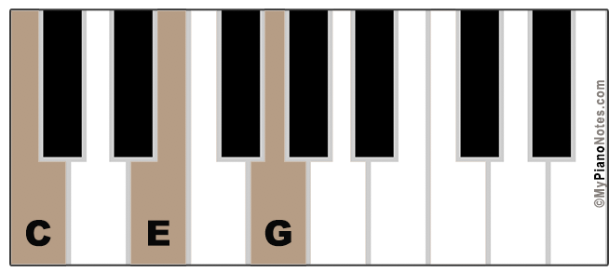
Chord IV – F Major
To find chord four, we begin on F; the fourth note of the scale. Remember that pattern you used to find the C chord: play a note, skip a note, play a note, skip a note, play a note? Follow the same pattern to build the F chord. You’ll play F A C.
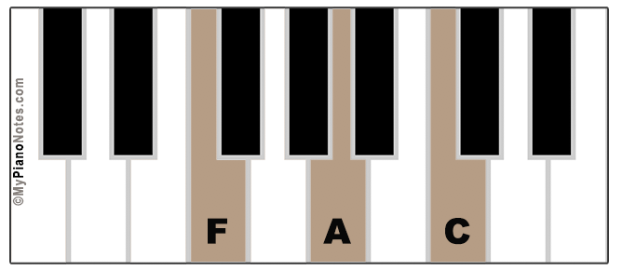
This is the F Major chord.
Chord V – G Major
Follow the same pattern to find chord V, although this time we begin on G, the fifth note of the scale. Remember the pattern: play a note, skip a note, play a note, skip a note, play a note. This time you’ll play G B D.
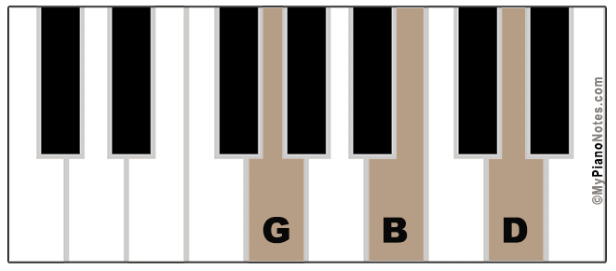
This is the G Major chord.
Secondary Triads (Chords) in C Major
The secondary triads in any are the chords built on scale degrees two, three and six. To find each of these chords we will again use the pattern of playing one note, skipping one note. You’ll notice that while each of the primary triads is major, the secondary triads are minor. This will be the same in each major key.
- Chord ii – D Minor: D F A
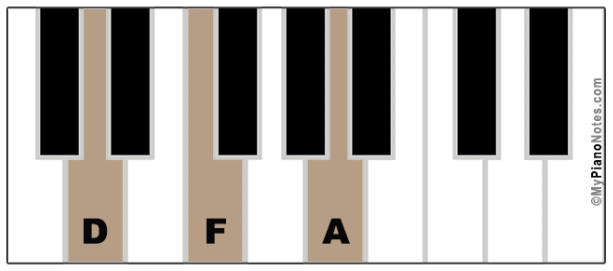
- Chord iii – E Minor: E G B
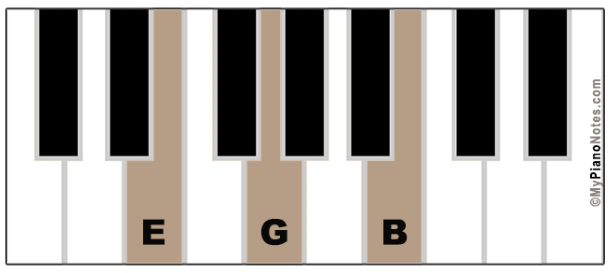
- Chord vi – A Minor: A C E
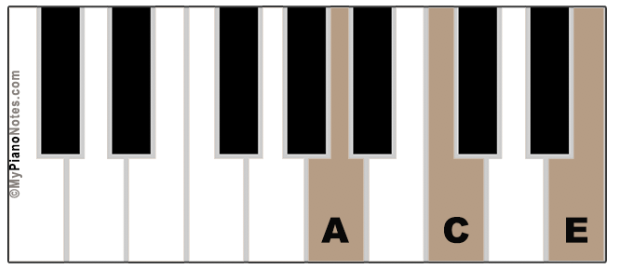
Notice that chord vi is the tonic chord of C Major’s relative minor— A Minor.
Chord vii°- B diminished
Building a chord on the seventh degree of a major scale will produce the dark sounding diminished triad. In C Major, this chord is B diminished: B D F. Play it carefully, listening to the difference in the sound.
Extended Chords
Because we are playing in the key of C Major, which has no flats or sharps, all the chords within the key use only the white notes on the piano. We can also use the notes of C Major to play the following four-note seventh chords:
- C Major 7th: C E G B
- D Minor 7th: D F A C
- E Minor 7th: E G B D
- F Major 7th: F A C E
- G Dominant 7th (G7): G B D F
- A Minor 7th: A C E G
- B Minor 7th Flat 5th (Bm7b5): B D F A
More Chords in different Keys:
- C Major (You are reading this)
- D Major
- E Major
- F Major
- G Major
- A Major
- B Major
- C Minor
- D Minor
- E Minor
- F Minor
- G Minor
- A Minor
- B Minor
- Genda Phool - May 27, 2020
- Qismat - May 27, 2020
- Naagin (Aashta Gill) - May 24, 2020





